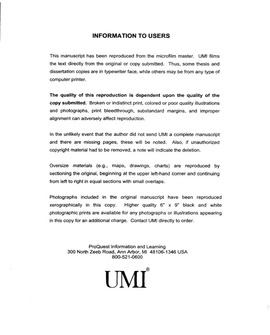| dc.contributor.advisor | Cowan, John J., | en_US |
| dc.contributor.author | Stockdale, Christopher John. | en_US |
| dc.date.accessioned | 2013-08-16T12:18:18Z | |
| dc.date.available | 2013-08-16T12:18:18Z | |
| dc.date.issued | 2001 | en_US |
| dc.identifier.uri | https://hdl.handle.net/11244/334 | |
| dc.description.abstract | Type II supernovae (SNe) are the cataclysmic and very luminous last stage in the evolutionary track of very high mass stars, resulting in the destruction of the star and the ejection of large amounts of material into their surroundings, with initial velocities in excess of 10,000 km s-1. SNe II are responsible for the creation of many elements and have a large impact on the chemical evolution of the host spiral galaxies. Not much is known about the later development of the progenitor stars of SNe II, as they are an extremely small subset of the stars in our Universe and are difficult to distinguish from other stars prior to the SN events. One of the best methods to study the properties of the progenitor star is to study the interaction of the SN ejecta with the circumstellar material around the SN, presumably lost in the years proceeding the SN event. This interaction produces radio and X-ray emission, which among other things is influenced by the speed of the outward shock and the density of the circumstellar material. By observing this emission over the course of decades, I garner insight into the late evolution of the very massive stars. Only a few SNe II have been detected and monitored in the radio (22) and X-ray (12) wavelengths. Using the Very Large Array (VLA), I have detected radio emission from five historical, decades-old SNe II [SNe 1923A, 195013, and 1957D in the galaxy, M83; SN 19706 in M101, and; SN 1961V in NGC 1058. Using the Roentgen Satellite, I have established X-ray upper limits for two such objects [SN 1959D in NGC 7331, and SN 1961V in NGC 1058. In this Dissertation, I report the time evolution of the luminosities and the spectral properties of these radio SNe in comparison with other such objects. I also have compared the detected X-ray and radio emission from SNe II, noting a clear correlation between X-ray and radio luminosities. I further report the detection of X-ray emission from the galaxy, NGC 7331, which appears to indicate the presence of a low luminosity active galactic nucleus. | en_US |
| dc.format.extent | xiv, 144 leaves : | en_US |
| dc.subject | Physics, Astronomy and Astrophysics. | en_US |
| dc.subject | X-ray spectroscopy. | en_US |
| dc.subject | Supernovae. | en_US |
| dc.subject | Radio sources (Astronomy) | en_US |
| dc.subject | Stars Evolution. | en_US |
| dc.title | A radio and x-ray search for intermediate-age supernovae: Tuning into the oldies. | en_US |
| dc.type | Thesis | en_US |
| dc.thesis.degree | Ph.D. | en_US |
| dc.thesis.degreeDiscipline | Homer L. Dodge Department of Physics and Astronomy | en_US |
| dc.note | Major Professor: John J. Cowan. | en_US |
| dc.note | Source: Dissertation Abstracts International, Volume: 62-05, Section: B, page: 2354. | en_US |
| ou.identifier | (UMI)AAI3014513 | en_US |
| ou.group | College of Arts and Sciences::Homer L. Dodge Department of Physics and Astronomy | |
